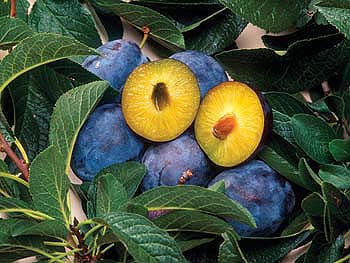All Issues
Sidebar: Biotechnology expands pest-management options for horticulture
Publication Information
California Agriculture 58(2):94-95.
Published April 01, 2004
PDF | Citation | Permissions
Full text
Fruit and vegetable crops are under constant pressure from pests such as weeds, viruses, fungi, bacteria, insects and nematodes. If not controlled, many of these pests substantially lower yields. Successful agricultural production has depended on the use of pesticides for 100 years, and, yet, losses still occur due to certain pests that are poorly controlled. Some crops incur high costs for hiring laborers to hoe weeds because there are no effective herbicides. In addition, new pests routinely arrive for which effective controls have not yet been developed.
Agricultural researchers continuously seek out new methods to control pests, including biological agents, new chemicals and plant resistance through classical breeding. Biotechnology also offers a solution in some situations where traditional methods are ineffective or costly. Numerous researchers around the world are investigating biotechnological solutions to pest problems of horticultural crops. In 2002, the National Center for Food and Agricultural Policy released a study of current and potential biotechnological approaches to pest management in a wide array of crops (Gianessi et al. 2002).
Current plantings.
The study identified three varieties of transgenic fruits and vegetables that are currently planted on small acreages in the United States: virus-resistant squash is grown on 5,000 acres in the Southeast, to prevent late-season losses to mosaic viruses; virus-resistant papaya is widely planted in Hawaii (2,000 acres) ( see sidebar, page 92 ); and insect-resistant sweet corn is planted on a small number of acres and has reduced use of insecticide sprays.
Withdrawn varieties.
Two transgenic horticultural varieties were available for a short time in the United States but were withdrawn due to marketing concerns. Insect- and virus-resistant New Leaf potatoes were planted on 4% of the nation's acreage in 1999 and were credited with reducing insecticide use. If the transgenic varieties had not been withdrawn due to processor resistance they could have been planted extensively in the Northwest, reducing insecticide use by 1.4 million pounds.
In 1999, the U.S. Environmental Protection Agency (EPA) granted Wisconsin sweet-corn growers emergency permission to spray herbicide-tolerant varieties ( see sidebar, page 110 ). The transgenic varieties were not widely planted due to marketing concerns and growers have not reapplied for the use despite continued production losses.
Crops currently being tested.
Numerous fruits and vegetables have been transformed through genetic engineering and are being tested for their potential role in improving pest management. For example, University of Florida researchers are testing virus-resistant tomatoes as a substitute for the extensive insecticide spraying currently utilized to control insects vectoring geminiviruses. In California, herbicide-tolerant processing tomatoes have been tested and have the potential to reduce grower costs by $30 million and replace the use of 4.2 million pounds of fumigants.
Plums resistant to the plum pox virus have been developed by scientists with the U.S. Department of Agriculture but are not yet available to growers.
UC researchers have tested herbicide-tolerant lettuce that could reduce herbicide use by 140,000 pounds a year. Herbicide-tolerant strawberries could save Eastern growers several hundred dollars per acre in weed-control costs. Nematode-resistant pineapple is being developed at the University of Hawaii to replace 1.4 million pounds of fumigants. Insect-resistant broccoli developed at Cornell University could improve yields in years of heavy insect pressure. Virus-resistant raspberries developed by U.S. Department of Agriculture (USDA) researchers in the Northwest could help combat bushy dwarf virus, which is present in 80% of Northwest plantings. And transgenic apples resistant to fire blight bacteria have been developed and tested at Cornell University; the transgenic varieties would replace the use of antibiotics, which are used to kill the bacteria on 25% of U.S. apple acreage.
Emerging pests.
Several research programs are focused on biotechnological approaches to control emerging pest problems. Plum pox virus was detected in the United States for the first time in Pennsylvania, where efforts are under way to eradicate it by destroying infected trees. USDA researchers have developed a virus-resistant plum that is being tested in Europe. If plum pox virus reaches California, the trans-genic plum could help prevent losses to the state's multibillion dollar stone-fruit industry.
Pierce's disease threatens California vineyards, and insecticide spraying has occurred to control the disease carrier, the glassy-winged sharpshooter. A researcher at the University of Florida (a state where Pierce's disease has been a problem for 80 years) has transformed grape tissue by inserting an antibacterial protein from another species into the grape genome. As a result, the transformed grape plant can destroy the bacteria without the need for insecticide sprays targeting the carrier.
Tristeza virus has killed 45 million citrus trees in Latin America and threatens the Texas citrus industry. Researchers at Texas A&M University have developed and are field testing virus-resistant trees.
Bacterial canker is present in Florida citrus orchards, and the state is trying to eradicate the disease by destroying infected trees, including millions of orchard and backyard citrus trees. A University of Florida researcher has developed and is testing a canker-resistant citrus tree.





